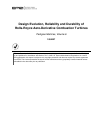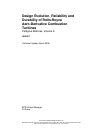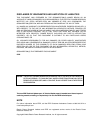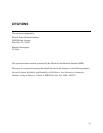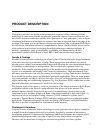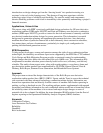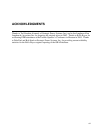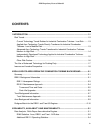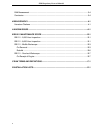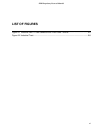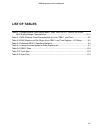
v
PRODUCT DESCRIPTION
Competitive pressures are driving power generators to exploit aviation combustion turbine
technology to create more efficient and powerful generation plants at lower cost. However, the
use of aero-derivative combustion turbines (third generation or "next generation") carry a degree
of technical risk because technologies incorporated into their design push them to the edge of the
envelope. This report reviews the design evolution and experience base of advanced Rolls-Royce
aero-derivative combustion turbines in a comprehensive format, which facilitates an assessment
of the technical risks involved in operating these high-technology combustion turbines. In
addition, a quantitative analysis-or reliability, availability, and maintainability (RAM)
assessment-is made for Rolls-Royce’s Avon, RB211 and Trent aeroderivative engines.
Results & Findings
Elements of aero-derivative technology developed in the 1970s form the basic design foundation
of the aero-derivative type machines of today. These designs have been refined over time to
provide proven, reliable, and maintainable designs while allowing the users the maximum degree
of flexibility in plant designs or configurations. The aero-derivative's greatest asset is its
modularity. With complete interchangeability of like modules and line-replaceable components,
it relies on a maintenance philosophy called "repair by replacement.” High performance, high
efficiency aero-derivatives are also fast starting and tolerant to cycling, characteristics that make
them suitable for peaking power and distributed generation applications. There are some generic
long-term problems associated with aero-derivatives, however, including bearings and seals that
require monitoring and conditioning equipment, Dry Low Emissions (DLE) combustion systems
that need refinement, and compressors sensitive to stall or surge.
The ultimate result of this report is a concise presentation of the design evolution of Rolls-Royce
combustion turbines in the form of a pedigree matrix that allows risk to be assessed. The
pedigree matrices identify design trends across all of a manufacturer's products that can be
categorized as low, medium, or high risk. Some of the trends identified as high risk include (1)
single crystal alloys and complex cooling schemes, (2) DLE combustion systems, and (3)
proprietary Thermal Barrier Coatings (TBCs) and bond coatings exclusive to industrial turbine
applications. Experience information includes site listings, O&M issues, and RAM-Durability
fleet data to provide a comprehensive assessment of model maturity.
Challenges & Objectives
Adapting aviation combustion turbine technology to power generation allows power companies
to benefit from development efforts and costs already absorbed by commercial and military
development programs. Computer-aided engineering and design programs and computer-aided
manufacturing programs make it possible to rapidly develop and produce new turbines.
However, this increased rate of change has increased the potential risk of new product



